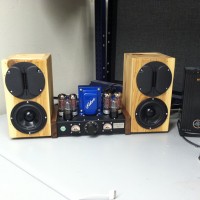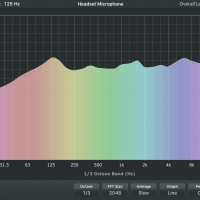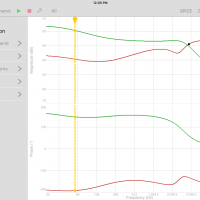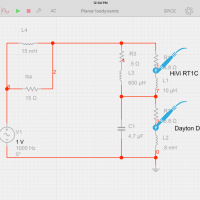
Very Small Executive Speakers
Designer:
Craig J. Coley
Project Category:
Bookshelf Speakers
Project Level:
Intermediate
Project Time:
1-8 Hours
Project Cost:
$100 – $500
Project Description:
This project is called the Coley P4 and is a very small “executive” speaker system designed for use with the Coley W210 stereo 10W amplifier. It uses a 4” Dayton woofer, HiVi planar isodynamic tweeter, first order series crossover and a somewhat unusual passive bass boosting circuit. Every effort was made to make these speakers as unobtrusive as possible, consistent with the intended purpose as a desktop system. Extensive use of SPICE modeling was performed to optimize the crossover design using commercially available components. Some driver efficiency was sacrificed in the design to gain extended low frequency performance.
Design Goals:
The objective of this project was to produce an excellent sounding speaker in a very small package for use as desktop speaker in the workplace.
Driver Selection:
The drivers were selected to be consistent with the requirements of jazz music, my primary listening genre. The bass had to be low enough to clearly reproduce an upright bass while the tweeter had to be delicate and transparent for cymbals and female vocals. For these reasons, the Dayton DS115-8 and HiVi RT1C-A were the selected drivers.
Enclosure Design:
Since several people in my home and office have asthma, I chose not to use MDF due to the possibility of formaldehyde emission. Solid 1”x6” cedar planks were used in a 12”x6”x6” enclosure. The cut boards were then butt mounted, trim nailed and sealed with natural wood glue. Once dried, an orbital sander was used to sand the entire box flat and the cabinet finished with only natural tung oil. Great care should be taken during assembly to not accidentally split the lumber. A more skilled carpenter could easily dovetail the box joints for a much more finished result.
Enclosure Assembly:
Wood hole saws were used for the woofer, port and terminal block mounting while a jig saw was used to cut the rectangular hole for the HiVi tweeter. The port is located on the rear of the enclosure behind the HiVi tweeter, extending almost the full depth of the enclosure.
Since the box was made without a removable baffle, the crossover components are next mounted and wired through the driver openings. Once the wiring is complete, the enclosure is completely filled with Polyfill which serves to both dampen the natural resonance of the cabinet as well as reduce the internal velocity of sound by about 20%.
Crossover Design:
Since I personally like the sound of first order series crossovers, this topology was chosen. The normal difficulty in designing series crossovers is greatly simplified by using SPICE to simulate the crossover performance in conjunction with the lumped inductance and resistive loading of the speaker. Final tweaking is still by ear but the SPICE model can zero-in on a workable design much sooner than simply trial and error. The unusual addition of an RL network in series with the speaker produces a 6dB/octave rolloff, effectively boosting the bass of the little woofer. In designing this, the L value largely determines where in frequency this occurs and the R limits the depth. The sweep curve shown in photos definitely shows a rolloff below 100Hz but this would be far worse without the bass boosting circuitry.
Tips & Tricks:
It is definitely not necessary to use natural wood; MDF would work equally well or better if allergies were a non-issue in your home. A slightly larger enclosure would extend the low frequency response but a substantial increase in enclosure volume will require tweaking the bass boost circuit.
Conclusion:
The speakers perform very well and are on my desk at work paired with my W210 tube amplifier. I almost exclusively listen to jazz music and the bass is more than adequate without the booming that would be common if I let the enclosure Q run too high. The HiVi planar isodynamic tweeters provide realism and crisp highs to cymbals and female vocals.
About the Designer:
This project was designed and constructed by Craig J. Coley of Burleson, TX. I work as an electrical designer and am listed as inventor on 8 US patents in the field of electro-optics. I have been an electronics hobbyist since I built my first Heath radio at age 7 and a ham radio operator since age 11.
Parts Used:
|
Part # |
Description |
Qty |
|
295-424 |
Dayton Audio DS115-8 4″ Designer Series Woofer Speaker |
1 |
|
297-400 |
HiVi RT1C-A Planar Isodynamic Tweeter |
1 |
|
255-040 |
Jantzen Audio 0.60mH 20 AWG Air Core Inductor Crossover Coil |
1 |
|
266-954 |
ERSE Super Q 15mH 16 AWG 500W Inductor Crossover Coil |
1 |
|
027-422 |
Dayton Audio DMPC-4.7 4.7uF 250V Polypropylene Capacitor |
1 |
|
005-15 |
Mills 15 Ohm 12W Non-Inductive Resistor |
1 |
|
260-283 |
Round Speaker Terminal Cup 2-15/16″ Gold Banana Binding Post |
1 |
|
260-470 |
Speaker Cabinet Port Tube 1″ ID x 4″ L Flared |
1 |
|
260-330 |
Acousta-Stuf Polyfill Speaker Cabinet Damping Material 5 lb. Bag |
1 |





These look great! Do you have a picture of how to wire the cross over as I’m not good with schematics?
Nice job but I too might have problem with the crossover
Dear Bob, would you be so kind to send a circuit diagram and a duagram if the bix as I am a humble layman with no more horizon than soldering itons and carpentry. Happy New Year Tony